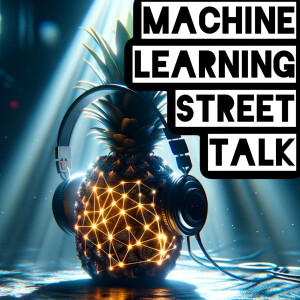
- Podcast Features
-
Monetization
-
Ads Marketplace
Join Ads Marketplace to earn through podcast sponsorships.
-
PodAds
Manage your ads with dynamic ad insertion capability.
-
Apple Podcasts Subscriptions Integration
Monetize with Apple Podcasts Subscriptions via Podbean.
-
Live Streaming
Earn rewards and recurring income from Fan Club membership.
-
Ads Marketplace
- Podbean App
-
Help and Support
-
Help Center
Get the answers and support you need.
-
Podbean Academy
Resources and guides to launch, grow, and monetize podcast.
-
Podbean Blog
Stay updated with the latest podcasting tips and trends.
-
What’s New
Check out our newest and recently released features!
-
Podcasting Smarter
Podcast interviews, best practices, and helpful tips.
-
Help Center
-
Popular Topics
-
How to Start a Podcast
The step-by-step guide to start your own podcast.
-
How to Start a Live Podcast
Create the best live podcast and engage your audience.
-
How to Monetize a Podcast
Tips on making the decision to monetize your podcast.
-
How to Promote Your Podcast
The best ways to get more eyes and ears on your podcast.
-
Podcast Advertising 101
Everything you need to know about podcast advertising.
-
Mobile Podcast Recording Guide
The ultimate guide to recording a podcast on your phone.
-
How to Use Group Recording
Steps to set up and use group recording in the Podbean app.
-
How to Start a Podcast
-
Podcasting
- Podcast Features
-
Monetization
-
Ads Marketplace
Join Ads Marketplace to earn through podcast sponsorships.
-
PodAds
Manage your ads with dynamic ad insertion capability.
-
Apple Podcasts Subscriptions Integration
Monetize with Apple Podcasts Subscriptions via Podbean.
-
Live Streaming
Earn rewards and recurring income from Fan Club membership.
-
Ads Marketplace
- Podbean App
- Advertisers
- Enterprise
- Pricing
-
Resources
-
Help and Support
-
Help Center
Get the answers and support you need.
-
Podbean Academy
Resources and guides to launch, grow, and monetize podcast.
-
Podbean Blog
Stay updated with the latest podcasting tips and trends.
-
What’s New
Check out our newest and recently released features!
-
Podcasting Smarter
Podcast interviews, best practices, and helpful tips.
-
Help Center
-
Popular Topics
-
How to Start a Podcast
The step-by-step guide to start your own podcast.
-
How to Start a Live Podcast
Create the best live podcast and engage your audience.
-
How to Monetize a Podcast
Tips on making the decision to monetize your podcast.
-
How to Promote Your Podcast
The best ways to get more eyes and ears on your podcast.
-
Podcast Advertising 101
Everything you need to know about podcast advertising.
-
Mobile Podcast Recording Guide
The ultimate guide to recording a podcast on your phone.
-
How to Use Group Recording
Steps to set up and use group recording in the Podbean app.
-
How to Start a Podcast
-
Help and Support
- Discover

Machine Learning Street Talk (MLST)
Technology

#041 - Biologically Plausible Neural Networks - Dr. Simon Stringer
Dr. Simon Stringer. Obtained his Ph.D in mathematical state space control theory and has been a Senior Research Fellow at Oxford University for over 27 years. Simon is the director of the the Oxford Centre for Theoretical Neuroscience and Artificial Intelligence, which is based within the Oxford University Department of Experimental Psychology. His department covers vision, spatial processing, motor function, language and consciousness -- in particular -- how the primate visual system learns to make sense of complex natural scenes. Dr. Stringers laboratory houses a team of theoreticians, who are developing computer models of a range of different aspects of brain function. Simon's lab is investigating the neural and synaptic dynamics that underpin brain function. An important matter here is the The feature-binding problem which concerns how the visual system represents the hierarchical relationships between features. the visual system must represent hierarchical binding relations across the entire visual field at every spatial scale and level in the hierarchy of visual primitives.
We discuss the emergence of self-organised behaviour, complex information processing, invariant sensory representations and hierarchical feature binding which emerges when you build biologically plausible neural networks with temporal spiking dynamics.
00:00:09 Tim Intro
00:09:31 Show kickoff
00:14:37 Hierarchical Feature binding and timing of action potentials
00:30:16 Hebb to Spike-timing-dependent plasticity (STDP)
00:35:27 Encoding of shape primitives
00:38:50 Is imagination working in the same place in the brain
00:41:12 Compare to supervised CNNs
00:45:59 Speech recognition, motor system, learning mazes
00:49:28 How practical are these spiking NNs
00:50:19 Why simulate the human brain
00:52:46 How much computational power do you gain from differential timings
00:55:08 Adversarial inputs
00:59:41 Generative / causal component needed?
01:01:46 Modalities of processing i.e. language
01:03:42 Understanding
01:04:37 Human hardware
01:06:19 Roadmap of NNs?
01:10:36 Intepretability methods for these new models
01:13:03 Won't GPT just scale and do this anyway?
01:15:51 What about trace learning and transformation learning
01:18:50 Categories of invariance
01:19:47 Biological plausibility
https://www.youtube.com/watch?v=aisgNLypUKs
More Episodes
 2025-03-19
2025-03-19
 2025-02-12
2025-02-12
 2025-01-25
2025-01-25
 2025-01-23
2025-01-23
Create your
podcast in
minutes
- Full-featured podcast site
- Unlimited storage and bandwidth
- Comprehensive podcast stats
- Distribute to Apple Podcasts, Spotify, and more
- Make money with your podcast
It is Free
- Privacy Policy
- Cookie Policy
- Terms of Use
- Consent Preferences
- Copyright © 2015-2025 Podbean.com



